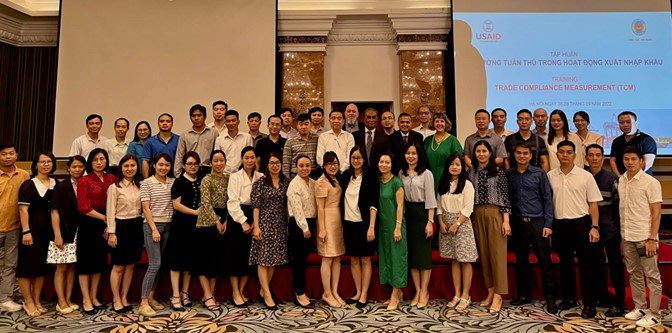USAID and U.S. Customs and Border Protection Cooperate to Deliver Training on Trade Compliance Measurement

Standard 6.5 of the Revised Kyoto Convention recommends that “Customs shall adopt a compliance measurement strategy to support risk management”. To support the General Department of Vietnam Customs (GDVC) to implement this recommendation, the USAID Trade Facilitation Program and U.S. CBP co-organized a training course on TCM in Hanoi on September 26-28.
The training was the latest in a series of TCM trainings that began in 2015. Over 54 customs officials (32 men/22 women) from local and central customs departments attended the training, which was delivered by three experienced U.S. CBP trainers–Dr. Golam Farooque, Mr. Braham Bhatia, and Ms. Jennifer Engelbach–who provided an overview of the methodology to develop, coordinate, and implement a TCM program. During the training, GDVC trainers introduced participants to the ‘R’ software program, which had been used to formulate a TCM pilot program in 2016.
GDVC Deputy Director General Hoang Viet Cuong expressed his appreciation for the technical assistance provided by the U.S. CBP and USAID, and directed the Risk Management Department to apply TCM, particularly in relation to a pilot program for fertilizer conducted in cooperation with the Ministry of Agriculture and Rural Development.
Compliance measurement provides objective and statistically valid results, which can be used as a predictive tool to identify areas of non-compliance and provide important information to strengthen risk assessment. As a result, TCM improves traders’ compliance with customs laws, thereby facilitating trade.

